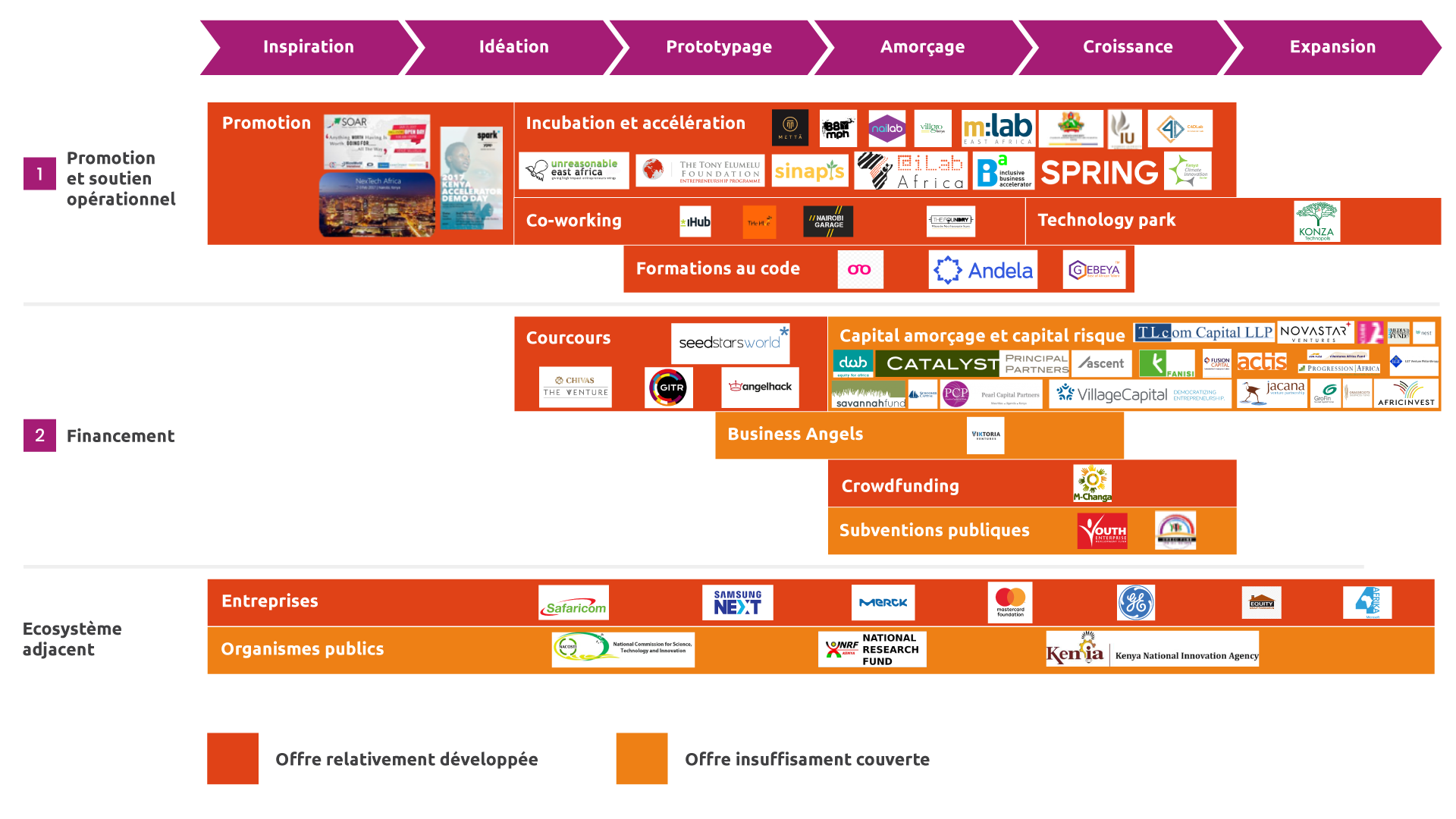Focus on the Kenya ecosystem
Dynamics of the startup ecosystem in Kenya

The Kenyan government has embarked on an ambitious dynamic to make the country a regional leader in several digital sectors with its Vision 2030 plan.
and middle income.

an annual GDP growth rate of 10% (compared to 5.6% in 2015) by 2030.

as an African leader in the outsourcing of business processes in IT services, telecoms, life sciences and education.

This has led to many initiatives
konza Technology City with a target of 200,000 jobs.

dedicated to technologies and innovation, as well as public policies for the development of innovation and ICT.

has allowed the country to have access to a quality telecom network at lower costs.

1/3 of startups carried by Kenyans are trained abroad or associated with foreigners
particularly in the United States and the United Kingdom, or having worked in large international technology groups (e. g. Google, Microsoft)
attracted by the abundance of innovation opportunities and the accessibility of venture capital funds
passionate about technology and encouraged to entrepreneurship by the existence of national success stories; an option considered as an attractive response to unemployment rates and low wages
-
Faced with high unemployment, young Kenyans are encouraged to innovate, with strong support from abroad.
Supports innovation and entrepreneurship
a collaborative innovation cluster created in 2010, with 16,000 members, has also encouraged the emergence of many players in the ecosystem.

has grown considerably in recent years, but they lack the appropriate tools and expertise to monitor the progress of incubated companies during and after the program.

Startup financing
Sources of financing for young entrepreneurs in Kenya
-
Access to financing through business angels remains low, due to a lack of visibility on investment opportunities and speculative valuations.
-
Venture capital funds are widely present in the ICT and Telecom sector. They focus on established and developing startups, with an average ticket of USD 1M. Project leaders needing mid-cap tickets (50 K to 1 M USD) are therefore struggling to find sources of financing.
-
As for crowdfunding, it is present but remains little known to foreign investors.
Infrastructure and services
public policies have been deployed to support VSEs but are unsuitable for startups.

and ecosystem structuring is perceived as a major obstacle to the effectiveness of the initiatives deployed.

Training and Research
The education system suffers from a lack of teaching staff and trains few technicians. However, private ICT training has developed to fill part of this gap.




